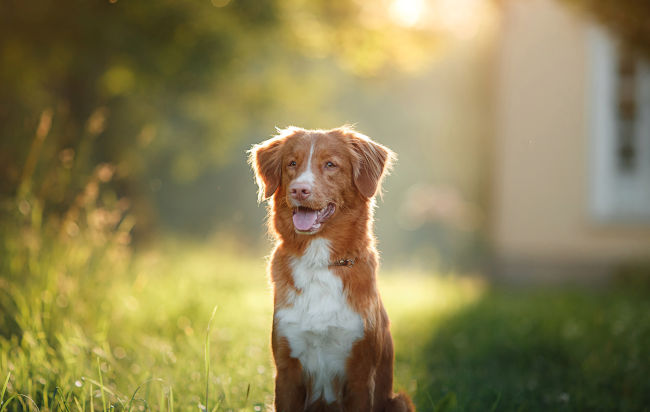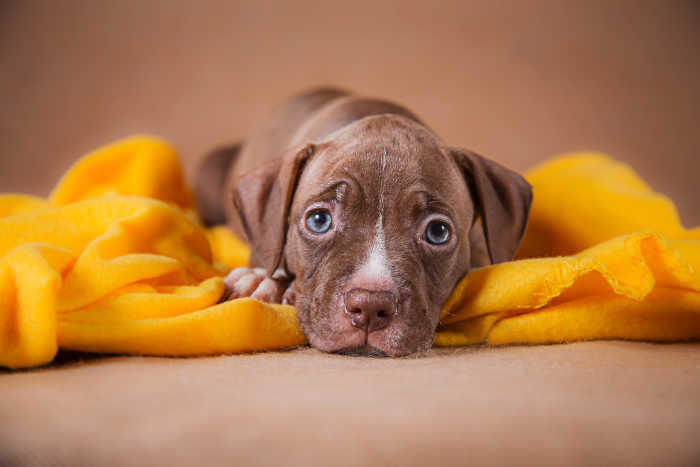A puppy entered your life and you instantly fell in love. Everything good about new love, you were feeling it all: the glow, the humor, the sense of wonder, exploring new things, seeing your familiar world through a young one’s eyes, pride, the daily blossoming of your relationship together. You were happy.
But then – after six or eight months, things began to change. Your pup began ignoring its training, wandering instead of coming when called, pulling on the leash, more focused on the scents and sounds around. More distractible. More defiant. More interested in other dogs and humans instead of you.
Just like a teenager. There it is. Your fur baby just turned into an adolescent. You may feel slightly abandoned, maybe even a bit betrayed due to the now dwindling innocent love you once shared.
So what are you supposed to do now?
How can you bring back the fur baby you nourished, guided and that locked up to you? You’ve put a lot of time, money and energy into your partnership, into creating a unique bond, and now you’re expected to love this little terror that’s developed all the same? You may be asking yourself, “What have I got myself into?”
Sadly, this age group – six months to two years – makes up the largest group of dogs ending up at the pound. Shelter employees often report that the reasons given include things like, “we can’t handle him” and “she’s too rough with the baby” or “he’s chewing up everything in sight. I can’t afford to replace all my furniture.” Sadly, a large number of dogs who go to the pound end up being put down.
This doesn’t have to happen, and you don’t have to feel like you’re going to have a nervous breakdown every time you have to deal with your adolescent pup!

So how exactly do you survive a dog’s adolescence?
First, here’s some things you should know. In the canine mind, each member of the pack has a role, and one member in particular is the leader who guides and protects all. That means if you aren’t the pack leader yourself, somebody else will have to assume control, and if they don’t, your dog will feel like it has to take the spot.
Just as with humans, pack members need security, attention, and mental and physical stimulation. Teenagers of almost all thinking species have a lot in common. Juveniles tend to grow up seeking more independence, to assert themselves, explore the outside world and seek bonds with others. But they still need parental protection and teaching. Those parental bonds still exist but the roles become slightly modified. Teenagers are not being difficult, at least not on purpose. Their bodies are rapidly growing and changing. Their sleeping and eating patterns are also changing. They become sexual beings with surging hormones. The mammalian brain is programmed to transition from childhood to adulthood by becoming bored and curious, driven to seek adventure. This is a time when lifelong habits, good and bad, are established.
In canines, adolescence can start as early as six months and last as long as two years. Small breeds usually mature more quickly than large breeds. Your dog’s breed can affect characteristics such as prey drive, territoriality, and protectiveness. As you may already know, but puppies experience a fear stage around eight or nine weeks of age, when they’re especially sensitive to fear-generating events such as noisy windshield wipers or flagpole ropes clanging in the wind. One or more fear impact periods occur during adolescence. These can create a lifelong fear. A surprise to many people is that a second teething stage emerges as adult teeth settle in the jaw, so your pup will have the physical need to chew more than usual! The jaws are becoming stronger so your pup has to relearn controlling his bite strength all over again.
What would a discussion about adolescence be without mentioning sex? Females generally become fertile after six months, having their first estrus, which is something similar to human menstruation. That means hormone surges, a need to get out and explore, more excitable, more sensitive to changes, and over-reactive.Personality changes often take place during adolescence as well.

It’s a normal life stage.
Your dog isn’t bad and you didn’t mess up.
Just remember to always keep your emotions in check as best you can. It’s easy to let feelings of frustration, anger and disappointment take hold, and then project these negative energies onto your pup as you struggle with its teenage behavior. Your dog has a strong sense for how you feel, so you want to project a strong sense of positivity, demonstrating your ability to stay calm and in control during times of stress.
A big issue for a lot of dog owners is unrealistic expectations. Examining your expectations and making adjustments will set your pup up for success rather than failure. Try to not let feelings of irritation and disappointment take hold, leading to excessive disciplinary action. Instead realize that your dog is in need of a strong leader, a partner to take the journey of life together with. Have you ever heard of “the teachable moment?” When you’re uncomfortable from pain, hunger, sleep deprivation, boredom, or illness, you’re not at your most cooperative and you’re certainly not in a mood to be told what to do. So keep in mind that if any of the above mentioned states are being experienced, your dog will be considerable harder to handle, teach and get along with. That means that keeping an eye on your pup’s well-being, as well as having a trusted veterinarian to stay current on preventive and maintenance care such as checkups, nutrition, nail trims, ear care, parasite management, is imperative.
Visits to the vet also accustom your pup to being handled as well as to trust human medical treatment. The vet will also discuss the health benefits and concerns of neutering/spaying. Moving forward, you’ll need to make a plan. An action plan distills your long-term goals into steps addressing specific actions you plan to take. It’s doesn’t have to be set in stone, but it helps you to organize your efforts. Focus on bond building and working on improving communication, as well as plenty of training early on. Use short, simple words and gestures that your pup can easily get a grasp of. Verbal and gestural communication to stop, sit, stay, lie down, come, back, and other commands such as DROP IT and NO BARK are a great place to start. Gardeners might also want to include NO DIG in that list. Include crate training (even if you don’t plan to crate your dog) because a crate can provide a safe place to shelter a frightened or injured dog. A crate can also prevent destruction of your belongings when you’re not home. All this basic training teaches good manners and self-control, so continue to reinforce this training throughout your dog’s life. Use rewards rather than punishment as a motivator to continue obedience and help your dog make great decisions.
Although many dogs love food as rewards, others may prefer a toy or an immediate show of your affection. Experiment to find what your dog loves most. If you need specific help with your dog and would like to know the secrets to creating the obedient pet of your dreams, Adrienne Farricelli’s Brain Training for Dogs comes highly recommended. Adrienne is a professional CPDT-KA certified dog trainer from the US, whose helped thousands of people with training their dogs to eliminate bad behavior, by releasing their dog’s natural hidden intelligence.
Check out our complete breakdown of the course in our Brain Training for Dogs Review.
Specific suggestions:
- Don’t allow your pup to get in the habit of escaping out the door, over the fence or away from you on walks. On walks use a long-line and call your pup back to you often with a small reward.
- Make all of your encounters as positive as possible and continue to reinforce the training you provided in the early months.
- Don’t yell at, intimidate or physically reprimand your dog.
- Don’t force your pup into frightening situations. Stay calm yourself.
- Continue socialization by introducing your dog to new people, animals and places.
- Continue to expose your pup to new but non-alarming sights and sounds. Allow your pet to set the pace and to sniff and linger on walks. Take many walks!
- Continue to expose your pup to new but non-alarming sights and sounds. Allow your pet to set the pace and to sniff and linger on walks. Take many walks!
- Puppy-proof your home and offer a bounty of chew toys.
- A tired dog, generally, is a good dog! Wear out your teen with games, puzzles, new tricks, classes, and walks.
- Seek out professional help from trainers and dog behaviorists if your struggles persist.
Adolescence is not the end of the world and doesn’t mean you’ll have a unruly and disobedient dog forever. With a little time, focus and training you’ll get through this, to be rewarded with a precious friend and companion hopefully for many years to come. Consider this a grand learning experience and you WILL survive!






